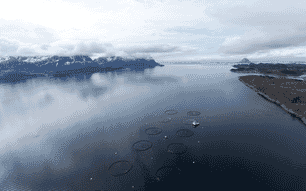Introduction
The objective assessment of quality is vital to enable industry agree and implement common trading specifications. Defining quality is not easy, as it can include a range of factors, which depend on market preferences such as: species, size, capture method, seasonal condition and freshness.
Of major importance to all consumers is freshness, a characteristic, which relates to the degree of spoilage a fish has undergone. Very importantly and unlike many other quality attributes, this is something that the fishing industry has certain control over.
Pelagic fish, such as herring, are much more susceptible to spoilage than whitefish species for several reasons. Under poor cold chain management, fast acting enzymes in the stomach, quickly digest the stomach wall after death, leading to rapid internal spoilage. Under similar conditions, the high fat content of the flesh is quickly oxidized, adversely affecting the taste and quality of the flesh. External spoilage also occurs on exposed surfaces in undesirable conditions and increases in rapidity as fish size decreases.
As a result of good manufacturing practices, spoilage at all stages in production and processing can be assessed and minimised. Tests used to regularly assess the freshness of herring include the determination of histamine and total volatile base nitrogen (TVBN).
Elevated levels of histamine can be indicative of bad handling practices and temperature abuse and are of importance to human health, as they can cause histamine poisoning in sensitive consumers.
TVBN is used as an index of freshness. It measures the key products of bacterial spoilage (ammonia, dimethylamine and trimethylamine) from a sample of fish and is carried out using specialised laboratory equipment.
Sensory assessment remains the most popular method of assessing freshness. This type of assessment uses smell, texture and visual appearance to determine the quality of fish. It is a particularly useful technique as it is low cost and requires nothing other than careful and exact training. It is a widespread and reliable assessment method and provides the foundation for the design and application of this guide.
Recommendations
- If vessels are unable to ice or otherwise chill fish at sea, trips should be kept as short as possible and no longer than 8 hours.
- Refrigerated Sea Water (RSW) tanks should be pre-chilled to 0ºC prior to receiving fish at sea and the ratio of fish to RSW should be at a maximum of 80%: 20%.
- Fish should not be discharged from RSW vessels, where their core temperatures are above 4ºC.
- Keeping fish in chilled RSW tanks is the most effective means of storage in order to maintain quality. Fish should only be discharged from the vessel when the processors are ready to process the catch.
- An appropriate ratio of pre-chilled water and brine to fish should be used in tankers transporting fish from RSW vessels to processors, in order to maintain the temperature of the fish or facilitate further chilling during transport.
- A maximum of 400kg (equivalent to half a bin of fish) should be brailed in a single operation from dry hold vessels.
- Bins, when used, should be iced top, middle and bottom, in sufficient quantities to assist rapid chilling and should not be overfilled with fish.
- Only numbered, clean, undamaged bins should be used to enable batch identification at the processors.
- Adequately chilled tankers should be transported to the processors immediately. The temperature of fish in transit should be regularly monitored and appropriate action should be taken to ensure that correct core temperatures are maintained.
- The temperature status of batches, upon arrival at the processors, should be recorded. Immediate action (the addition of ice or refrigeration) should be taken, if required, to reduce batch temperatures to acceptable levels.
- Fish should be rapidly processed to minimise storage duration in tankers or bins. Regular temperature checks should be undertaken of fish in storage to ensure that the correct chill chain management is maintained.
- Adequate traceability should be implemented to allow batches with different time-temperature histories to be identified and segregated at processors. It should be possible to trace each batch back to the vessel for product recall purposes.











